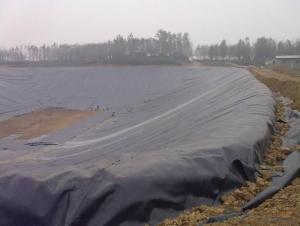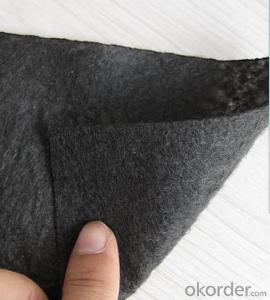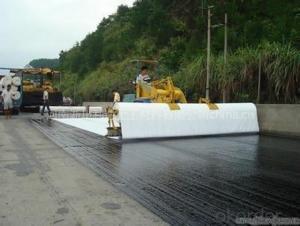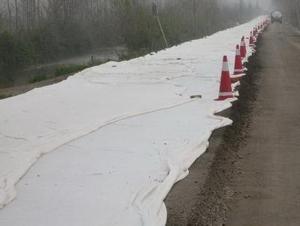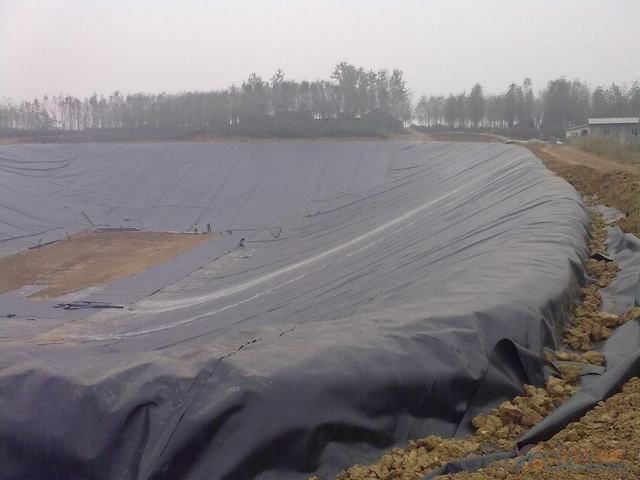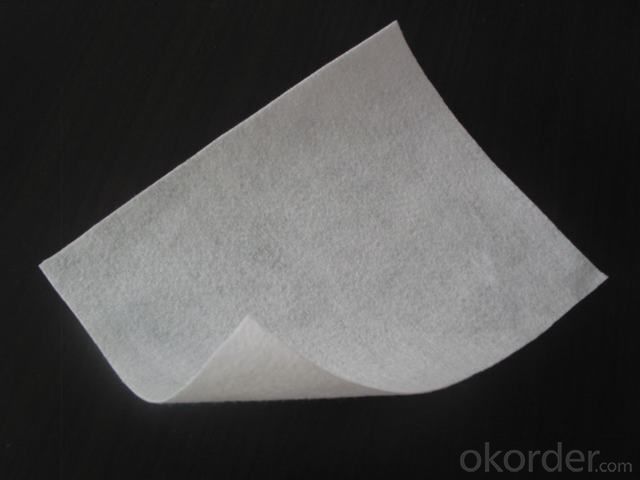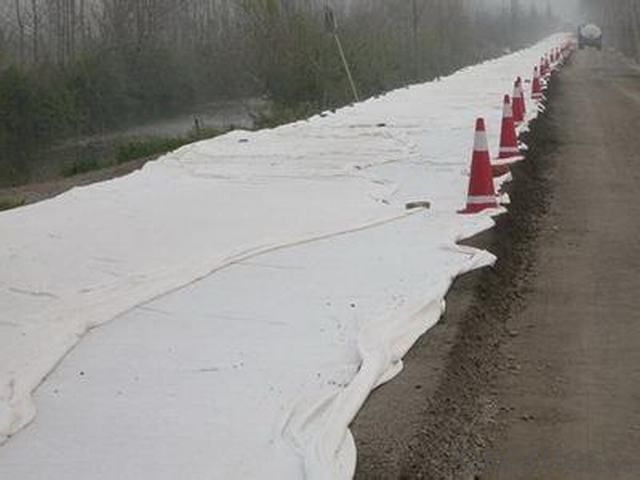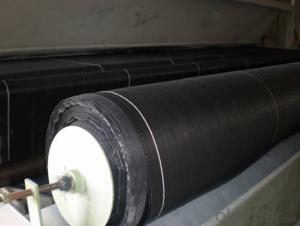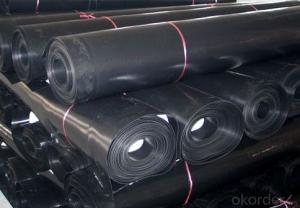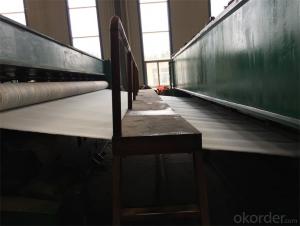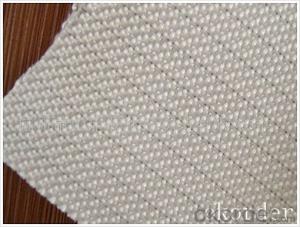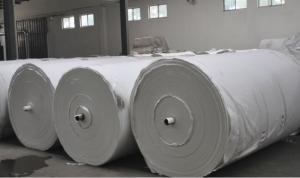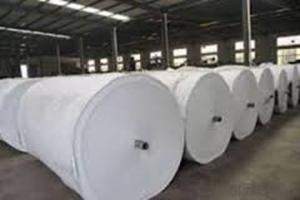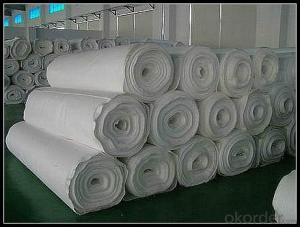Northwest Linings & Geotextile Long Fiber Geotextile for Railway Construction
- Loading Port:
- Qingdao
- Payment Terms:
- TT OR LC
- Min Order Qty:
- 20000 m²
- Supply Capability:
- 1500000 m²/month
OKorder Service Pledge
OKorder Financial Service
You Might Also Like
Product Description of Long Fiber Geotextile Introduction:
1. Filtration
It can be the filtration layer of the dykes, river canal, seacoast, concrete slope, retaining walls. At the same time of preventing the clay granule from passing, it allows the water and the gas pass through freely.
2. Separation
The isolation of the railway dregs and the roadbed, roadbed and the soft base, surface of the airdrome and parking lot and the groundsill, different dam materials. It isolates the soil and the gravel of two kinds different granule pathway from the groundsill or other buildings.
3. Reinforcement
The highway, railway, soilstone dam, breakwater, airport, backfill soil of retaining wall, slope protection, etc in which distributes the earth stress, prevents the side-displacement of the earth body and improves the earthbody stability.
4.Protection
It prevents the bank from being washed out, protects the bank and the bottom, prevents the water and soil from being washed away.
5. Anti Aging
The fabric can also be heat treated by infrared at customer's requirements. Our geotextile are UV stabilized to give protection against aging under exposure to natural ultra-violet light.
6. Applications
It is widely used in the areas of railway, highway, water conservancy, dam, tunnel, subway, environmental protection and so on
- Q: Can geotextiles be used in road construction?
- Yes, geotextiles can be used in road construction. They are commonly used as a part of the road pavement system to enhance the performance and durability of the roads. Geotextiles provide reinforcement, separation, and filtration functions, helping to prevent the mixing of different soil layers, improving load distribution, and reducing the potential for pavement damage.
- Q: After the laying of drainage board and then need to lay a layer of geotextile it?
- Yes, from the role of filtration, over the water, but to prevent clogging, I professional production
- Q: Concrete panel shop asphalt do not add geotextiles
- Plus no geotextile cloth according to the design requirements and construction specifications. Generally require high road construction need to lay geotextile. Geotextile manufacturers to answer your questions
- Q: Can geotextiles be used for reinforcement of slope toe protection systems?
- Yes, geotextiles can be used for reinforcement of slope toe protection systems. Geotextiles are commonly employed to enhance the stability and strength of slopes by acting as a barrier against erosion and soil movement. By providing reinforcement and preventing soil erosion at the toe of the slope, geotextiles can effectively protect and stabilize the slope against potential failures.
- Q: 200g / m2 geotextile how to enter the inspection test
- In accordance with national standards for testing ah
- Q: How do geotextiles help with reinforcement of geotextile bags?
- Geotextiles help with the reinforcement of geotextile bags by providing additional strength and stability to the bags. They act as a barrier between the bag material and the surrounding soil, preventing soil erosion and enhancing the bag's structural integrity. The geotextiles distribute the load evenly across the bag, reducing stress concentrations and preventing the bags from bursting or tearing under heavy loads. Additionally, they allow for effective drainage of water, maintaining the bags' stability and preventing water accumulation that could potentially weaken the bags.
- Q: The amount of geotextile drainage of the drainage pipe, as well as the amount of gravel block ye count
- Calculate the surface area of the water pipe, and then add a 10% of the amount, is the amount of geotextile, Huazhi geotextile material manufacturers to answer
- Q: Does geotextile affect water purification?
- Do not know what you use after the purification of water, if not drinking water, I think it will not affect the water quality, the general purpose of water purification, geotextile will not affect, because the geotextile material is polyester or polypropylene, In the chemical nature of relatively stable, no changes in room temperature conditions, so there will not be any impact on water quality
- Q: Which big god has the relevant documents? bow down!
- Geotechnical materials in the application of seepage in the drainage, the specific is to protect the blind ditch.
- Q: How are geotextiles used in agricultural applications?
- Geotextiles are used in agricultural applications to stabilize soil, control erosion, and promote proper drainage. They are typically placed beneath soil or gravel surfaces to prevent weed growth and maintain soil structure. Additionally, geotextiles help retain moisture, improve filtration, and mitigate nutrient leaching.
Send your message to us
Northwest Linings & Geotextile Long Fiber Geotextile for Railway Construction
- Loading Port:
- Qingdao
- Payment Terms:
- TT OR LC
- Min Order Qty:
- 20000 m²
- Supply Capability:
- 1500000 m²/month
OKorder Service Pledge
OKorder Financial Service
Similar products
Hot products
Hot Searches
Related keywords
